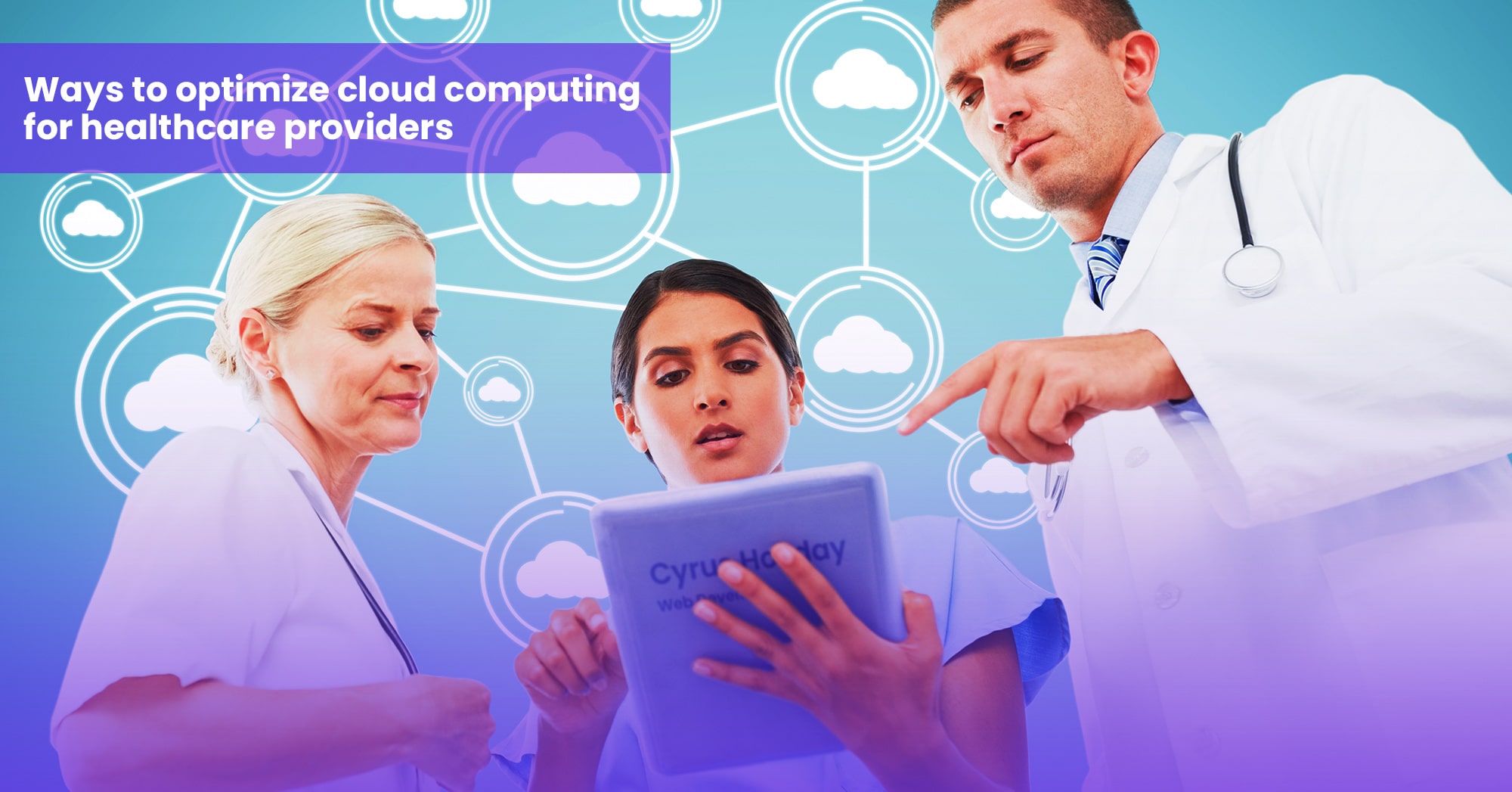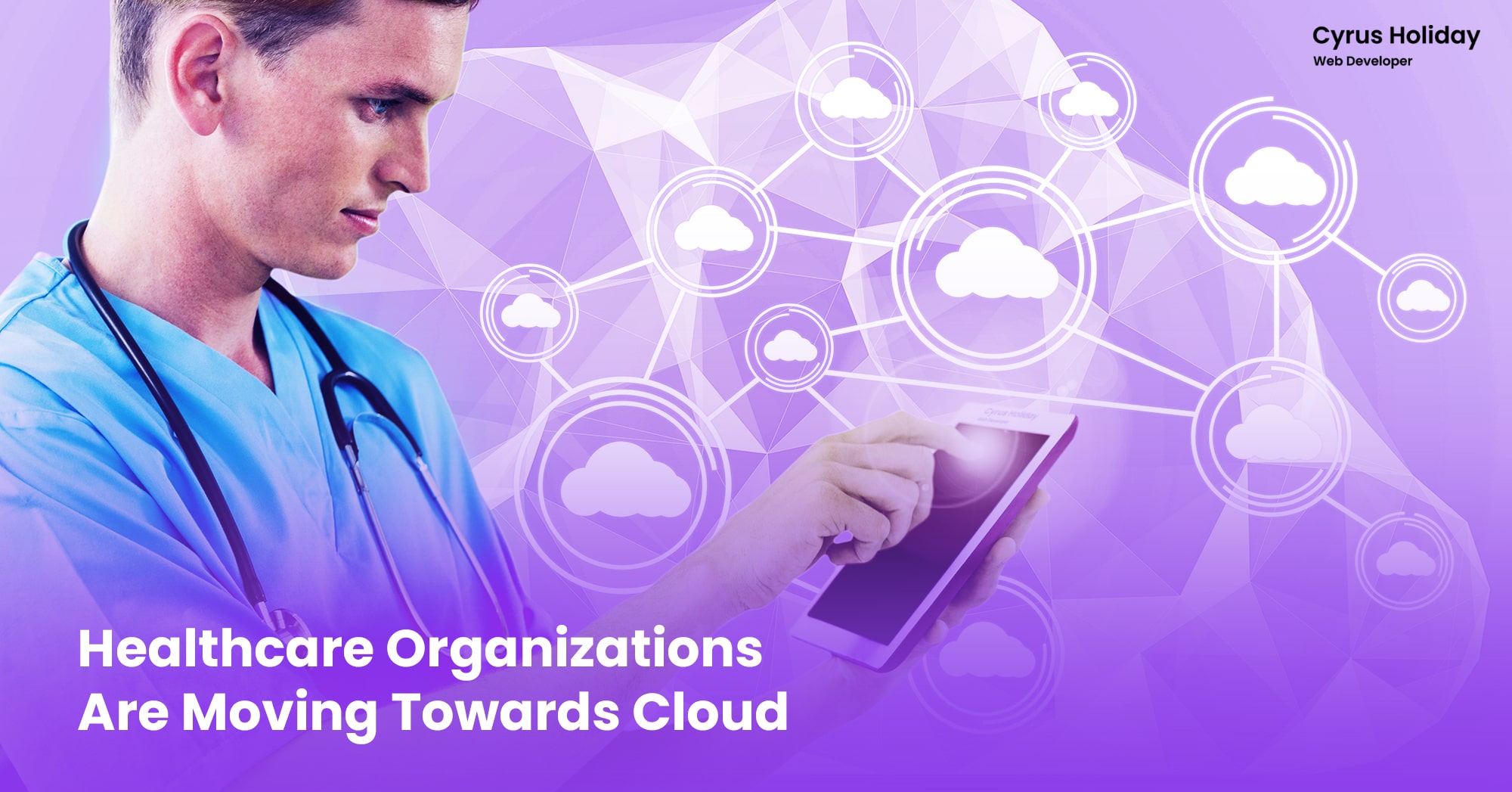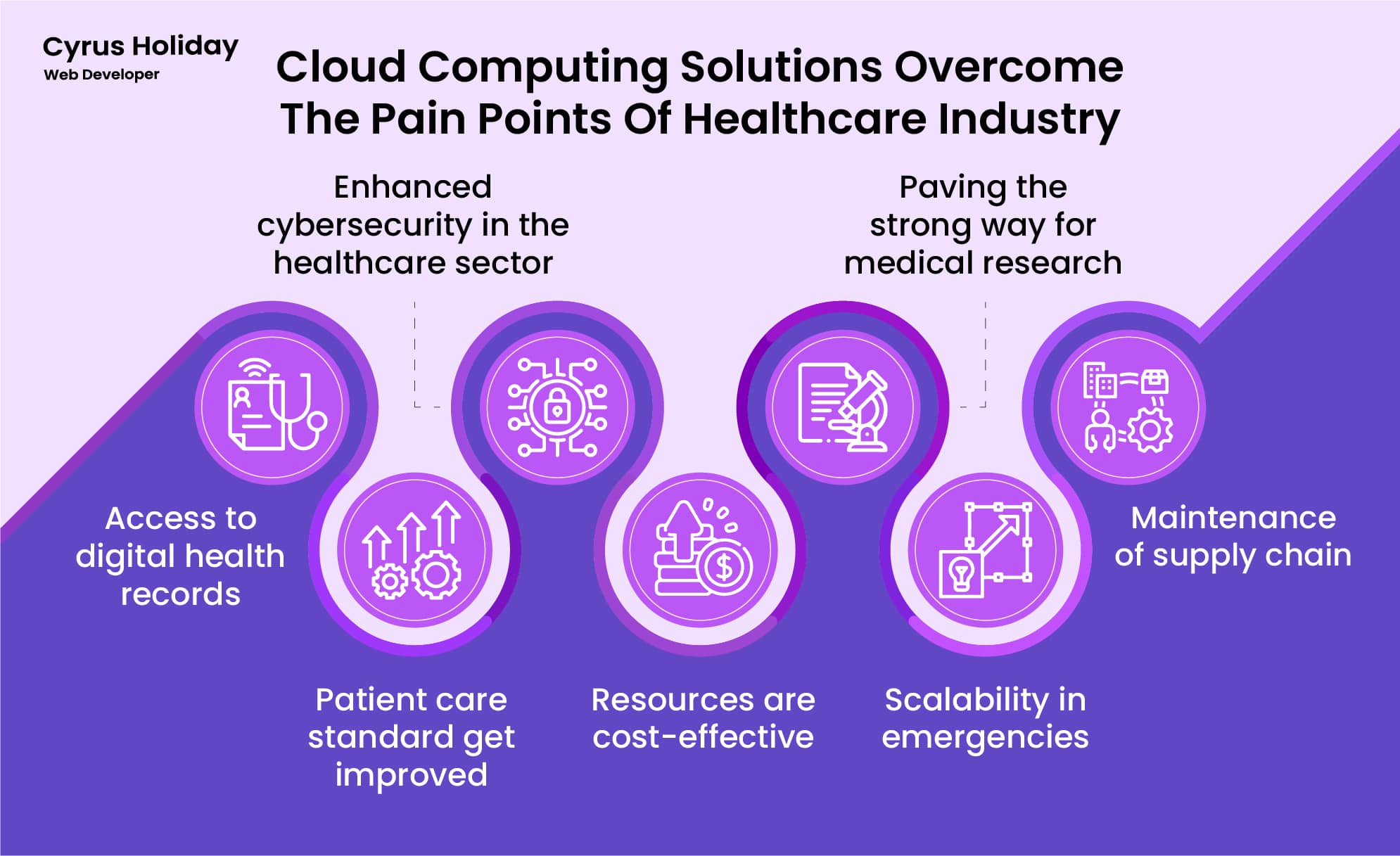

Technologies have made advancements in recent years, and we can witness those. Every individual industry is uplifting the benefits of new trends and technologies. However, cloud applications here are assisting many sectors as well. We have everything from software to applications to help accomplish our requirements. Hence I am here to help you gain information on cloud applications for healthcare providers.
For patients and clinicians, cloud computing is a connected, accessible, and collaborative ambience for healthcare providers. However, talking about the long run will likely ensure lower costs and satisfaction among the entire staff and patients. There are several ways to optimize cloud computing for healthcare providers.
On the other side, it has also been seen that the healthcare industry is one of the more complex regarding data management. The analysis estimated that cloud computing in medical science will reach $65 billion by 2025. Healthcare companies run non-cloud data centres and business systems exclusively compared to any other industry.
But I cannot deny that the hybrid cloud shapes healthcare.

As we all know, the healthcare industry is quite complex. It is in terms of the process involved (the sensitive and private data). However, as I said, industry complexity could also lead to significant challenges.
However, technology has always been the saviour for industries, and in turn, one of those is cloud computing. It has been widely used in the healthcare industry for several years and continuously evolving with changes.
I cannot witness that technology is transforming the healthcare industry at different levels, with varying features like collaboration, scalability, efficiency, security and reachability.
The on-demand cloud computing features add value to the healthcare institutes and providers to deploy, access and even handle network information.
Also, healthcare is one such sector that has been at the forefront of adopting cloud technology. However, healthcare providers now realise the true potential of cloud computing. Hence, more and more clients are reaching me to take advantage of it. However, being a freelance WordPress developer, I deliver the best of my expertise towards cloud computing.
Hence, I can assist healthcare industries in undergoing best practices. However, you plan to adopt the best measures. In that case, you first need to understand the technology because it is essential to understand what benefits it can serve you or what significant challenges it can come up with.

The growing demand for technology has compelled the options for reliable infrastructure in IT and even data storage. It refers to the on-demand availability of computer resources (data storage and computing power).
Besides this, the term cloud describes the data centre available to many users over the internet, distributed over multiple locations and central servers.
Offers easy storage of documents placed where you can easily access them from any device. You know that all the applications and software had to be on a computer and server that can be easily accessible at one location. With the introduction of the cloud, individuals could easily access their programs with the help of the internet.
Hence it is becoming a necessity for many industries.
Cloud-based healthcare system refers to the integration of cloud computing technology. This is mainly for the creation and management of cloud-based healthcare services. More and more providers are looking to work with the vendors that provide cloud computing solutions; hence, you can reach me if you are one of those. I have assisted many healthcare industries in saving and retrieving digital records by making them work more quickly and efficiently. Also, many points could help you to know why cloud-based healthcare systems are in demand.
A number of ways are available to optimize cloud computing for healthcare providers. Adopting a cloud-based health system can easily manage all overheads and infrastructure. The major advantage is that cloud-based healthcare systems develop a more defined and confined place in remote patient monitoring with telehealth and telemedicine solutions.

Healthcare industries are adopting new technologies to streamline the process. It assists patients in delivering new patient care applications
and provide improved healthcare services
But even these IT solutions face major challenges like-
However, with the adoption of cloud computing, the resources are provided immediately without any human intervention.
A wide number of users can easily access the pool.
Easily add, remove or even delete as per the organization’s requirement.
A wide range of network accessibility is provided
The client here needs to pay for what they need.
Now with this, I will also help you to undergo the difference between traditional healthcare and cloud-based healthcare systems.
There are many differences that I could help you to undergo. In this manner, you will be able to know or differentiate between traditional and advanced cloud-based healthcare systems.
There was a time when healthcare records were customized with the help of programmers or skilled experts. On the contrary, cloud-based solutions are fully customizable with built-in features and various care plans.
However, many templates are available for easy interface cloud solutions.
There is also a need for servers for traditional healthcare systems’ in-house data storage, software, and hardware installation (at the physician’s location). But with the advancements, cloud-based systems offer convenience and easy accessibility to log on to the device.
When discussing liability and compliance, adhering to the government rules and HIPAA requirements is essential. But coming to cloud computing, care providers do not have to worry about system meltdowns, natural calamities and weather patterns that are broken down. Different backup requirements come with enhanced security and also tight protocol. So healthcare providers here do not have to be worried about anything.
Traditional-based web servers are more liable to malware, viral, and hacking attempts than cloud-based. But I cannot deny the fact that both require enhanced security. Health protection is the first and foremost concern whether you obtain a cloud or traditional-based solution. However, with the adoption of cloud computing, a powerful enforcing encryption method is safer and more secure than the traditional method.
There is no denying that the healthcare industry has coped with the traditional healthcare system to the advanced level. But all of these do suffer from pain points as well. Hence these can be covered only when you know all of them. Perhaps it is also essential to know what all those are to get started with the destruction of pain points.
Before the invention of the healthcare industry, many pain points could have come up. However, it is also necessary to determine the one.
You must have witnessed that the healthcare institutions and even hospitals operating the chain undergo flaws in data transfer. This happens due to the multiple locations and mainly because data is enormous in volume. Cloud computing can allow easy and centralized data storage. Hence there was a problem in accessing centralized data storage.
Dealing with outdated management technologies can lower your speed. The main reason behind this is it cannot process large data in the given time.
As we all know, when data increases, the pace decreases and may result in data loss. But with the introduction of cloud computing, it can manage speed, accuracy and data together.
Dealing with unorganized data comes from various sources and has become a significant concern for healthcare industries. While in tradition, there was no certainty and, in turn, can manage to undertake benefits. Cloud assistance could help in maintaining the data and records appropriately.
The medical facility needs to update its records to date. This ensures they have all data in one combined place. But in some hospitals, there might be the required medical equipment availability. Adopting cloud computing in the healthcare industry will keep you up with all such pain by keeping you in profit.

Cloud computing offers various benefits by allowing users to use infrastructure, systems and software programs supplied by the cloud providers.
Cloud computing in healthcare can be of two sorts.
The distribution version (hardware/software program) may be deployed as a software program as a provider, infrastructure as a provider, and platform as a carrier. The deployment model (who owns it) can be private, network, public, or hybrid.
Following are the benefits of cloud-based revolutionary solutions to triumph over the pain factors of the healthcare enterprise.
Patients used to carry separate records or data (files) of their healthcare. But with the advancements in cloud computing, every record can be saved within hospitals, and in turn, patients can walk freely and take consultation with their concerned specialists.
A cloud-based healthcare solution complements affected person care by bringing progressive remedies to the desk. With a few clicks, a patient can provoke virtual periods or schedule an appointment with a medical doctor, execute car reminders for the upcoming meetings, and observe U.S.A. Using cloud offerings.
Security and safety are one of the most important benefits that cloud computing can deliver. This will eventually help save all data by offering enhanced measures to protect health and safety.
A cost-effective method that can help doctors to take command at the time they need. In turn, cloud computing can handle all orders, and in this manner, things can be sorted in a cost-effective way.
Cloud services are known as a beneficial aspect at the time of emergencies. This could combine natural calamities, pandemics and the time when there is a lack of resources. Hence then, the information is transmitted with the help of cloud computing.
Care vendors, doctors, and medical professionals invest a lot of time in research to improve their practice. They gather essential records about surgeries and remedies. The saved and segregated facts can assist them in examining and study properly and set them as case research and a thesis for future reference to other docs.
The high value of data related to medical equipment, pills and medications need to be maintained. This means at the time of storage, I want the expiry date, buy date, supplier details, etc. Yet the real data can be stored and retrieved from the cloud.
All of the benefits are achieved with the introduction of cloud computing. But behind all of these benefits, factors and other functionalities, there is a complete mechanism with which cloud computing works. Hence, it is also necessary to know what exactly this is. So without any further ado, let me take you to the brief working mechanism of cloud computing.
Offering a safe and secure structure to hospitals, medical practices, insurance companies, and research facilities. The main objective with which cloud computing works is to improve computing resources.
It reduces the barriers and the innovation and modernization of the healthcare system and application.
However, if I tell you the fast workflow of cloud computing, here is the cloud computing process.
This process is carried out with the help of cryptography protocols to access private cloud resources.
This particular process ensures the users access private cloud resources.
The function of this process is to keep track of all healthcare data for a longer time.
During the data exchange, cloud computing ensures that it remains secure and safe.
It results in transmitting data that is easily accessible by the user only.
Cloud computing has made a strong advancement in the healthcare sector. It has managed to scale a tremendous flow in delivering advanced benefits while maintaining security, safety, reliability, and a cost-effective approach. The significance of cloud computing in healthcare is massive; they make a huge high-quality impact on organizations and clinics. The trendy reviews display that adopting cloud solutions is certainly on the table for clinical groups. The primary boundaries are either safety worries or a loss of inner technical resources.
We deliver unique and blended experiences to our customers across the globe. From idea to execution and launch, we do ALL.
Our ServicesOrder Now
0 Comments